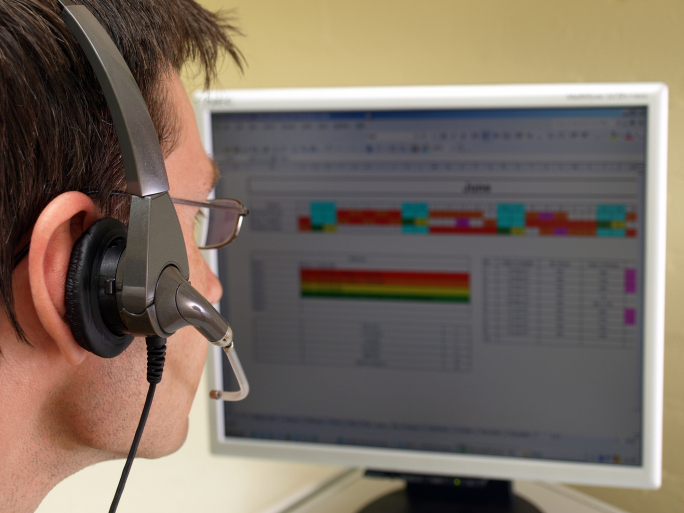March is Save Your Vision Month, and this year’s theme is “Healthy Vision at the Computer.” When people frequently spend a long time sitting at the computer, they often notice uncomfortable symptoms such as neck strain, headaches, backaches, or wrist pain. But there’s another group of symptoms that often go unnoticed even though the problems are right before your very eyes…literally. Vision problems like eye strain, blurred vision, and dry eye are also issues for people who spend lots of time using computers. These eye problems contribute to Computer Vision Syndrome, the eye/vision problems that occur due to computer use.
Frequent computer work causes a person to look straight ahead for long periods of time, work in a dry home or office environment, and blink less often, all of which can lead to vision problems. In addition, computer work also requires specific vision skills, like ocular motility (the eyes’ ability to move in various positions) and accommodation (the eyes’ ability to focus clearly at various distances). These skills add more demands to the visual system and can also contribute to eye and vision discomfort.
In today’s world, it’s unlikely that simply decreasing the time you spend at a computer is a feasible option–so if you can’t spend less time at the computer, make sure to aim for healthy and comfortable vision while using the computer. The American Optometric Association recommends the following tips that can help you maximize healthy vision and minimize Computer Vision Syndrome:
- Have an eye exam done to make sure that your eyes are healthy and that, if necessary, you have the proper prescription for your eyeglasses or contact lenses. Don’t forget to tell the optometrist about the computer work that you do.
- Ask about lenses that are designed to help you function comfortably at the computer–the glasses or contacts that you wear for day-to-day activities may not be the best for computer work.
- If possible, use a humidifier to help prevent eye dryness.
- Take frequent breaks when working at the computer. Get up and walk around, or simply sit in your chair and close your eyes to rest them.
- Make sure your workstation is designed for your comfort. Make sure you can sit comfortably in your chair with your feet on the floor, that the back of your chair fits your spinal contour, that your hands can comfortably reach the keyboard, and that your monitor is placed straight ahead of you on your desk. Clean your monitor so that it is free of dust and fingerprints, both of which can reduce clarity.
If you have more questions about how to reduce the effects of Computer Vision Syndrome, or if you have other concerns or questions about your vision, make sure to talk to your optometrist.




[…] you sit at a computer for long periods of time? If so, it’s important to take breaks to ensure your eyes have proper rest and avoid strain and other related […]